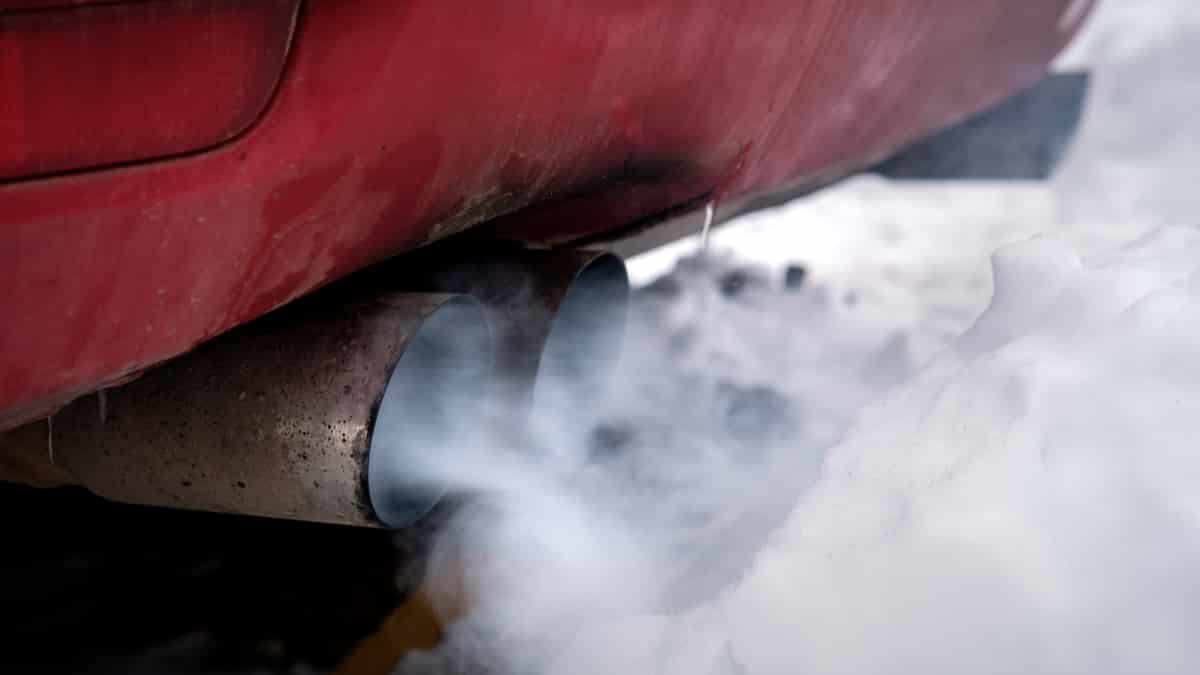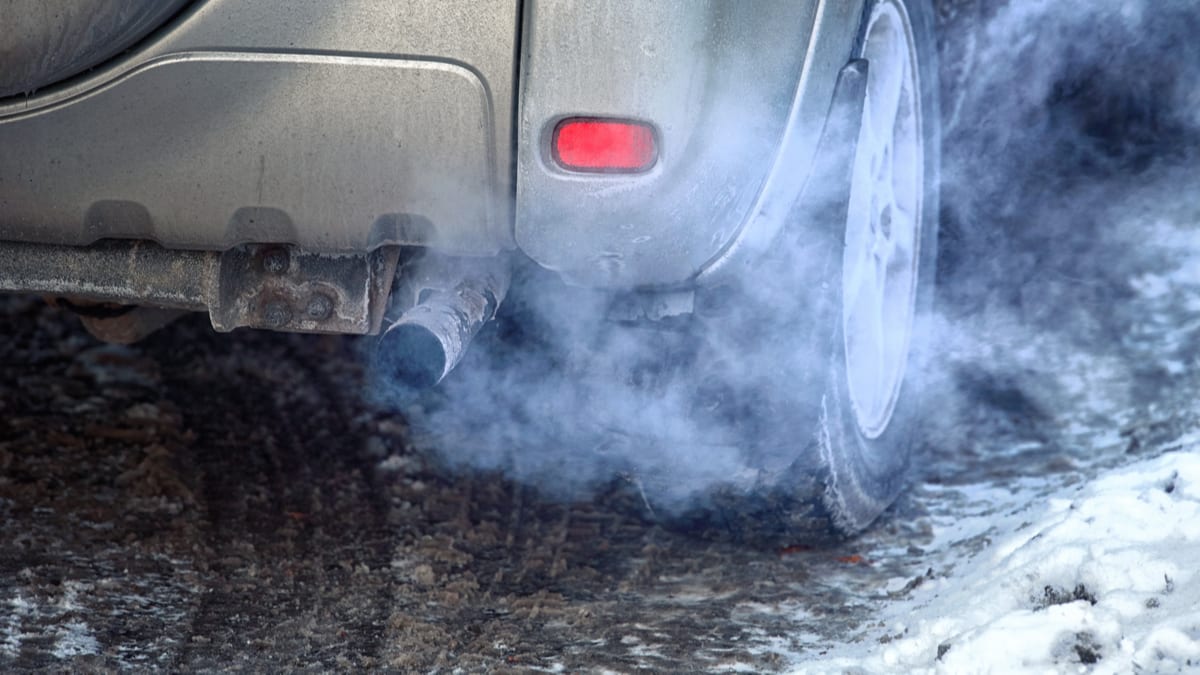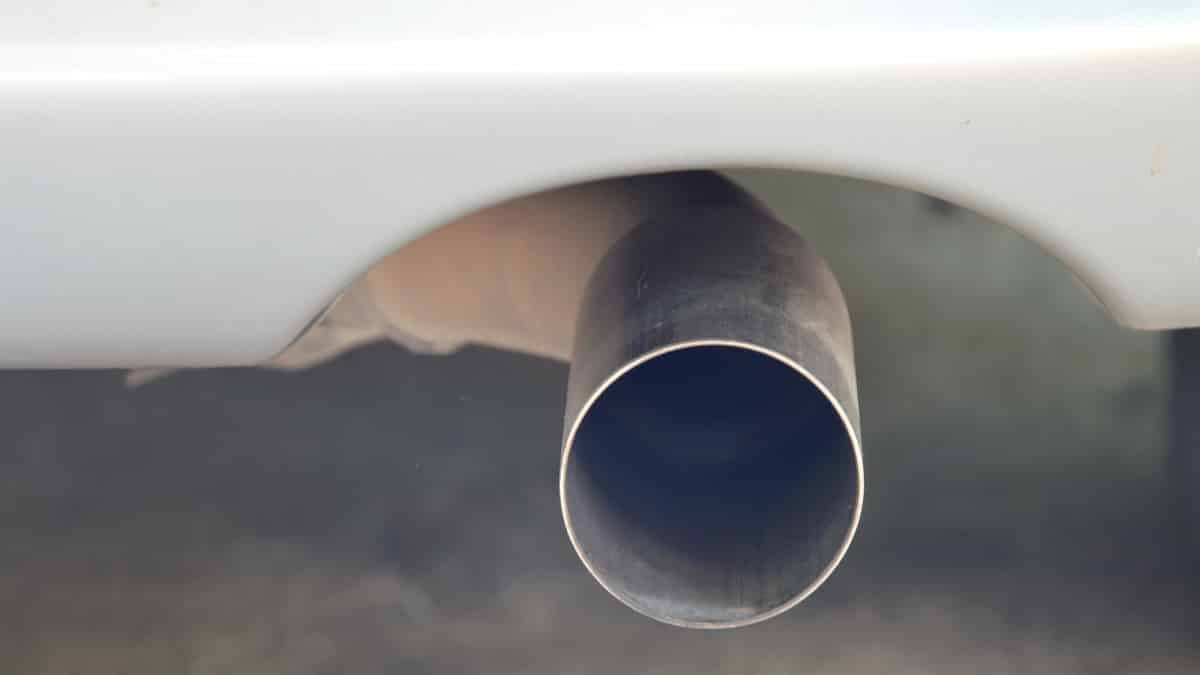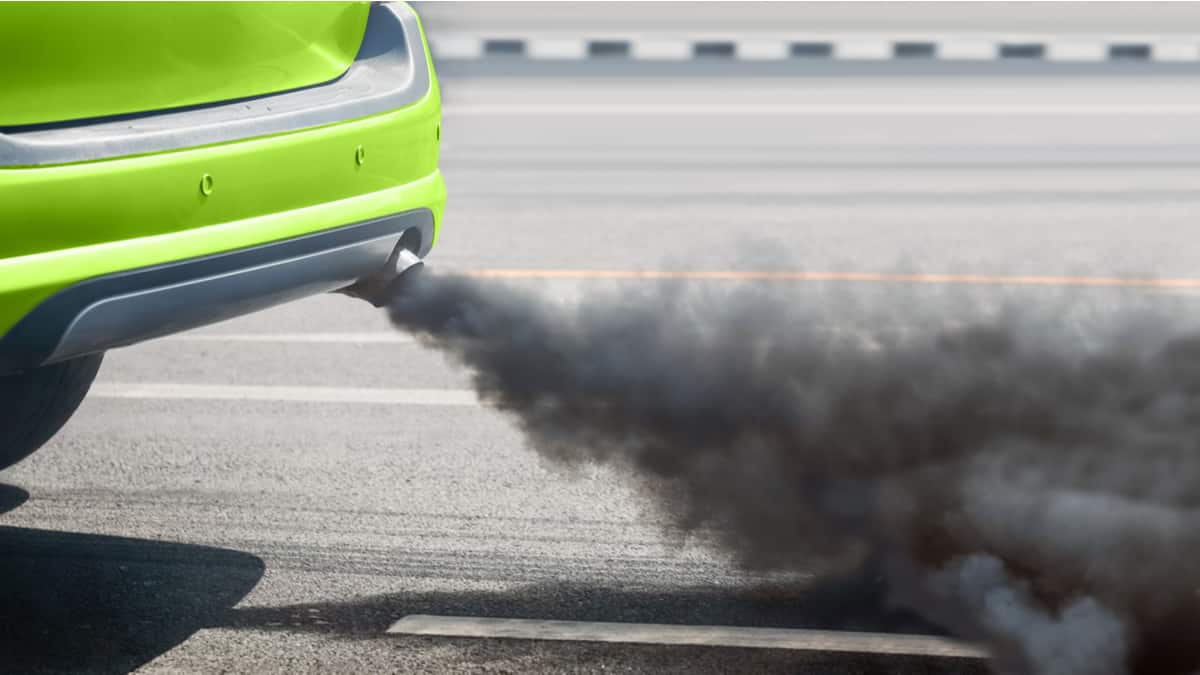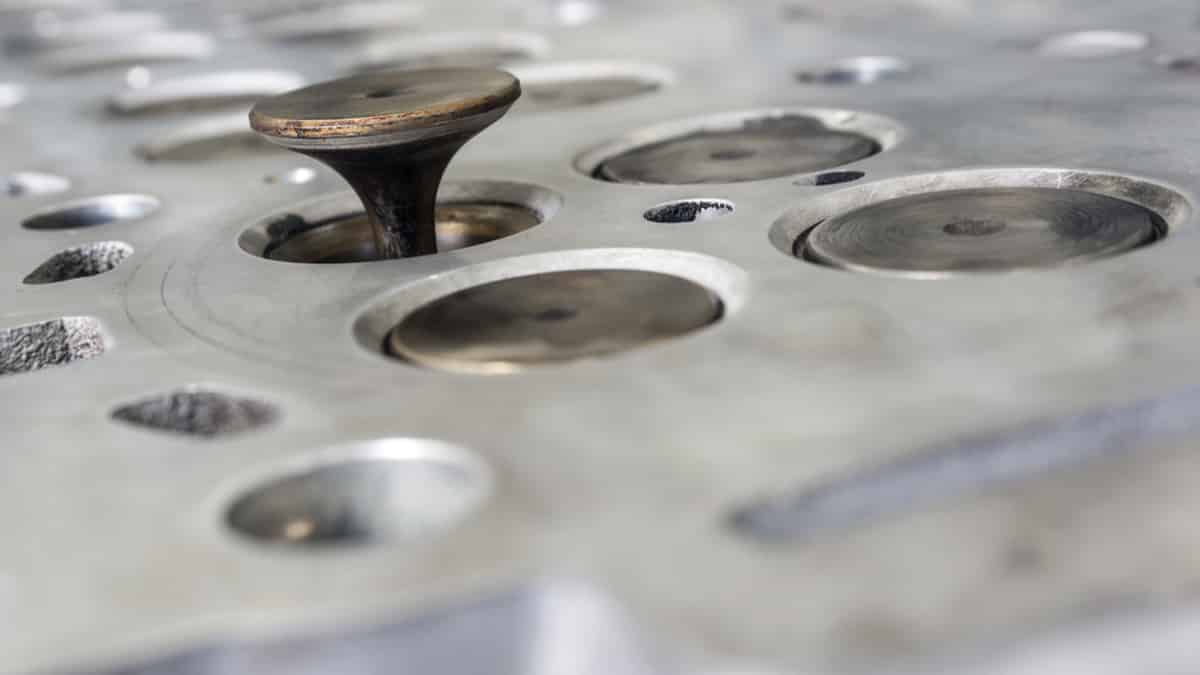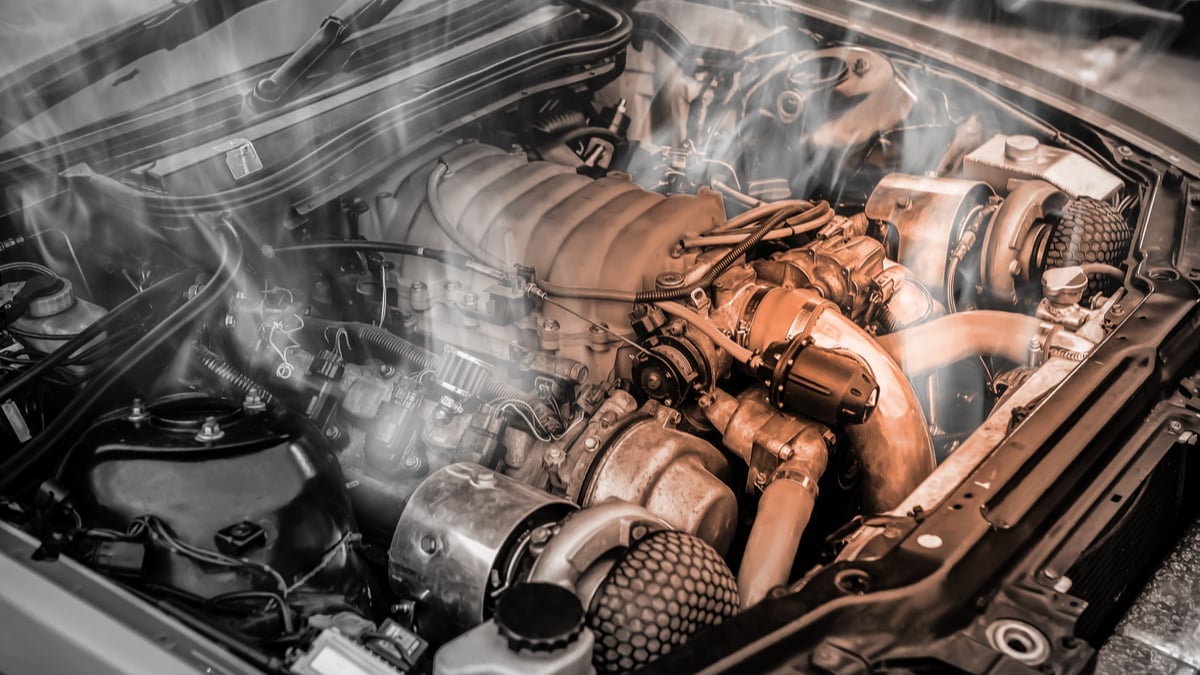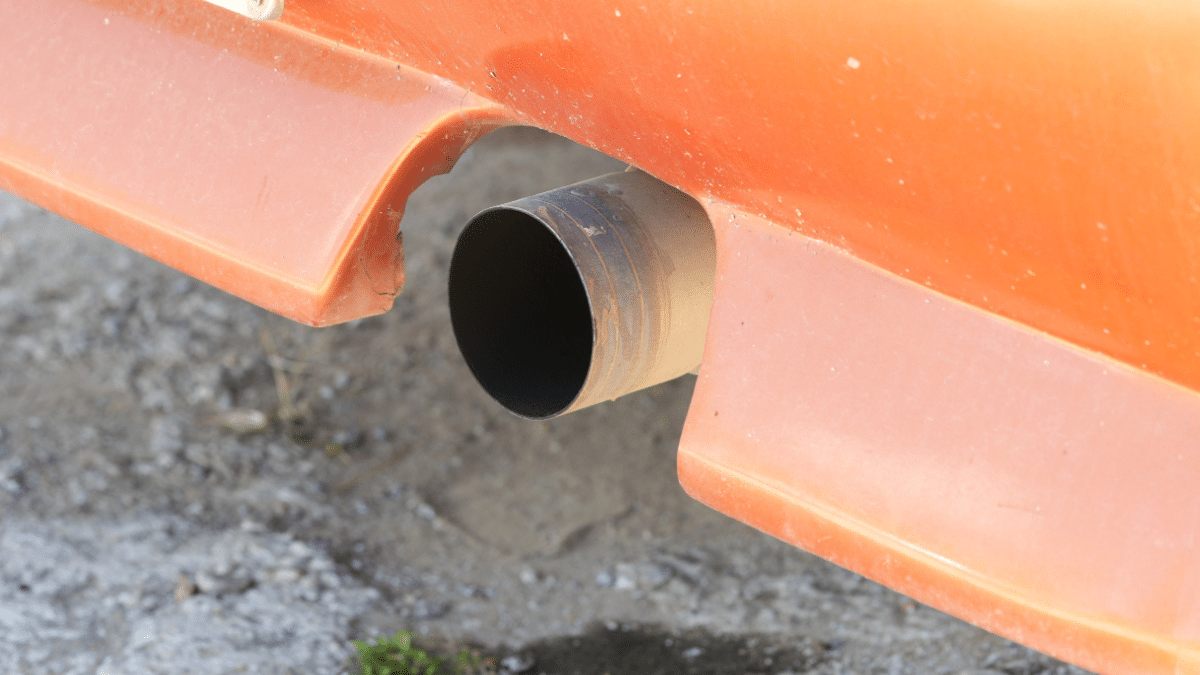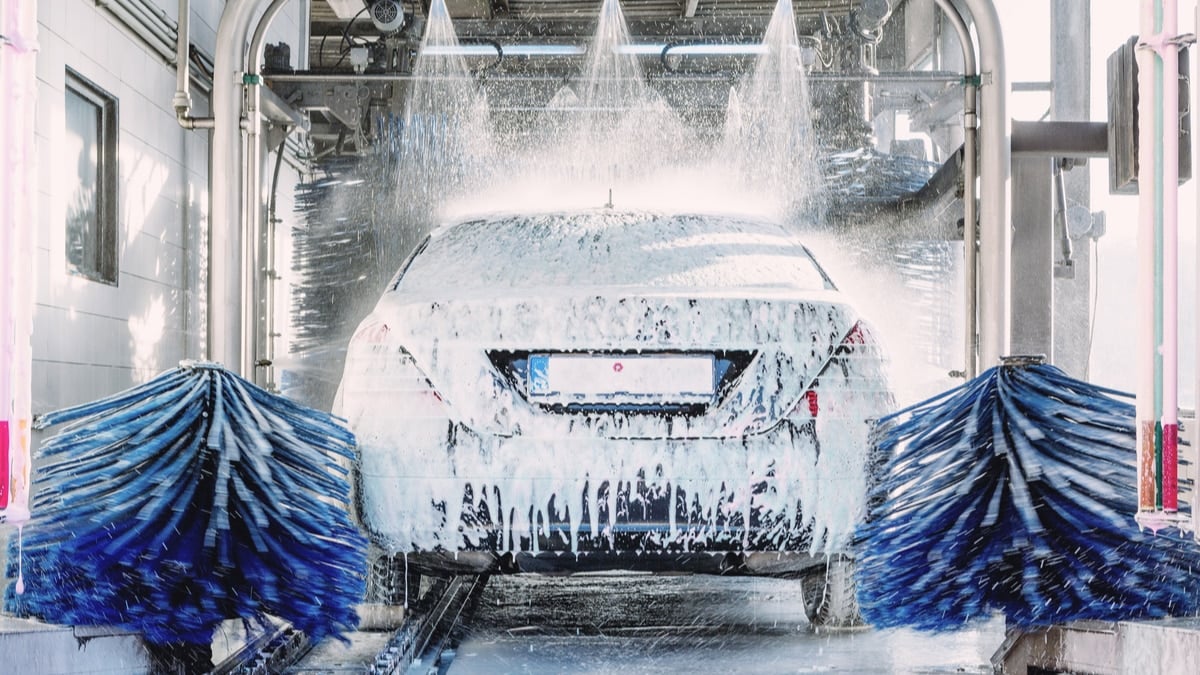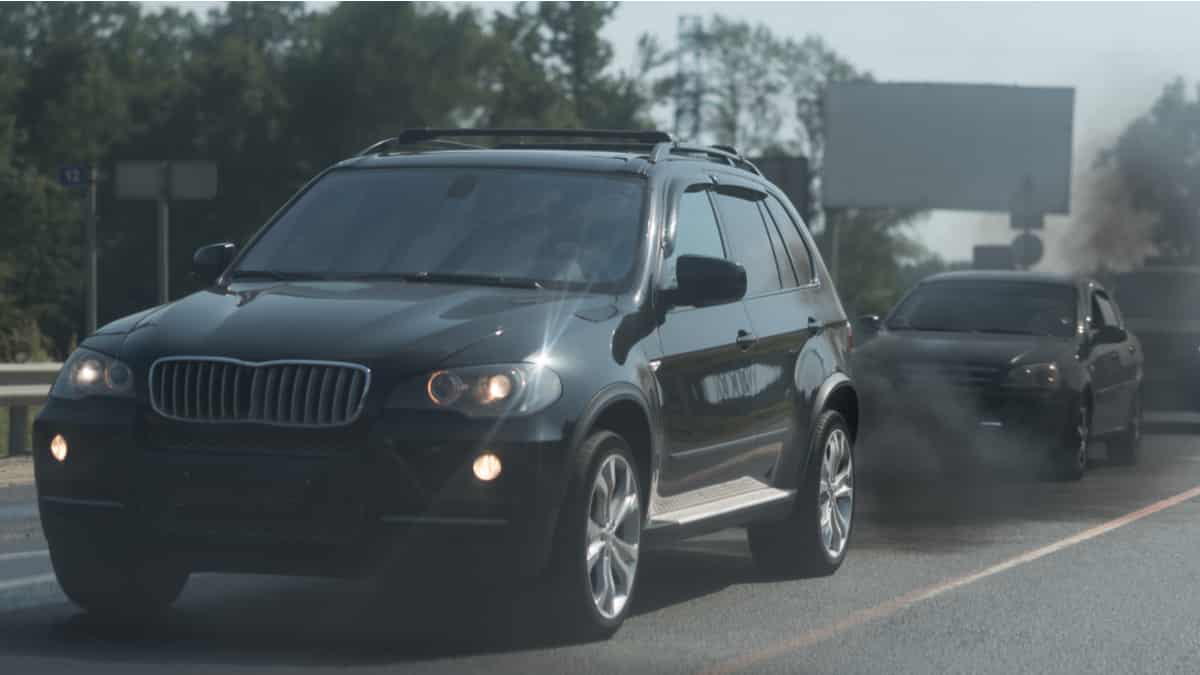Smoke from the exhaust pipe can be caused by all kinds of things. It can also come in a variety of colors.
Ranging from blue, grey, white, and blue, every type directly points to a different problem with your car.
But what does it mean when white smoke comes from the exhaust pipe, and what causes that to happen? Will it be expensive to repair? Let’s begin with a quick look at the causes.
Reasons For White Smoke Coming from the Exhaust Pipe
The most common cause of white smoke coming from the exhaust is condensation from the exhaust system. It can also be caused by a leaking intake manifold gasket, a bad EGR cooler, a blown head gasket, or a cracked cylinder head.
White smoke can either be very light, just like a vapor, or it can be dense and heavy smoke. White smoke from the exhaust pipe during startup, idle, or acceleration tells us that coolant or water is getting vaporized in the exhaust pipe.
You can also carefully smell the water or smoke from the exhaust; if it smells sweet, it’s most likely coolant, and in this case, you have a bigger problem.
Here is a more detailed list of the most common causes of white smoke from the exhaust pipe:
1. Condensation
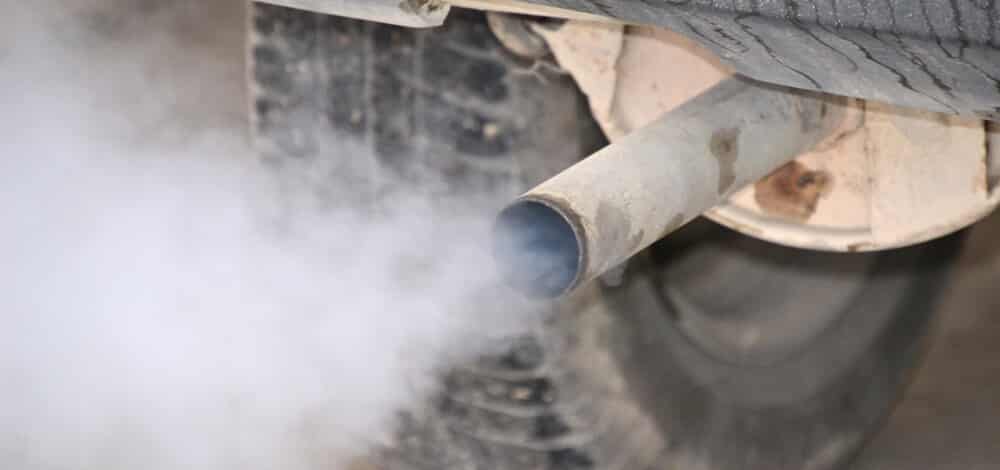
The most common reason for white smoke from the exhaust pipe is condensed water that is getting vaporized.
When your car is standing for a long time and hasn’t been used for a day or two, there will be condensation left over from the last time your car was driven.
This water will lay in the bottom of your exhaust, and once you start the car, the exhaust will get hot and then vaporize the condense.
If the white smoke is light and only comes for a short time after the starting moment at cold starts, there should be nothing to worry about. It’s most likely just condensation.
RELATED: Black Smoke From Exhaust (Causes & How to Fix it)
2. Leaking Intake Manifold Gasket
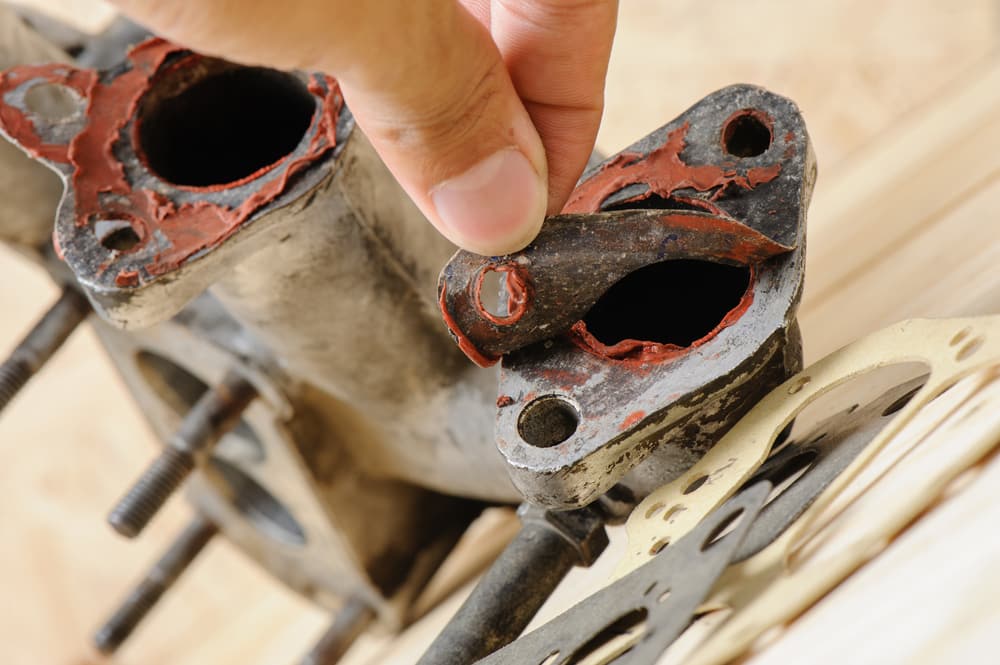
This next problem is more serious, but still not too bad. Your intake manifold is the part that divides the air going into the cylinders of your car.
Intake manifolds are often cooled by coolant fluid, and therefore they have a gasket between the intake manifold and the cylinder head. Sometimes, the gasket goes bad and starts to leak.
If you have a bad intake manifold gasket, you will often smell sweet smoke from the exhaust gases.
Learn more: 5 Symptoms of a Bad Intake Manifold Gasket
3. Bad EGR Cooler
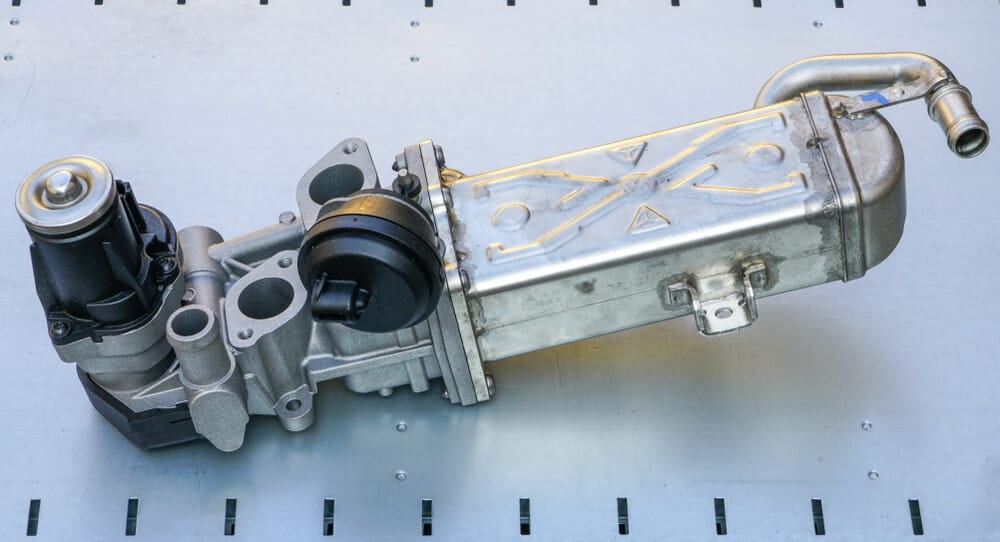
If your exhaust smoke smells sweet, it’s most likely a condensed coolant you are facing.
One more common cause of this on modern vehicles is a crack inside the EGR cooler. Not all cars have EGR coolers, though, and it is more common on European cars, but it is definitely worth checking.
This can be pretty difficult to diagnose properly as there are no signs you can look for outside the engine.
However, if the EGR cooler is cracked, it has to get replaced. If you suspect that your EGR cooler is faulty, you may have to get help from a mechanic to diagnose it properly.
The best way is to check inside your cylinders and spark plugs. If the car is combusting coolant, it will clean the cylinders. So if no of the cylinders is cleaned, but the car is still burning coolant, it must come from after the combustion chambers, like from the EGR cooler.
4. Blown Head Gasket

The head gasket is a gasket placed between the engine block and the cylinder head. This gasket separates combustion, oil, and coolant between these two parts.
When the head gasket is either damaged or cracked, it can cause coolant to leak into the combustion chambers. The opposite can also happen.
This can cause the engine to combust coolant, and it will result in heavy white smoke from your exhaust, depending on the size of the leak.
Unfortunately, a blown head gasket is often very expensive to repair because you have to disassemble many parts to replace it.
If you want to go further into bad head gasket diagnosing, check out our other article here: Bad Head Gasket Symptoms.
5. Cracked Cylinder Head or Block
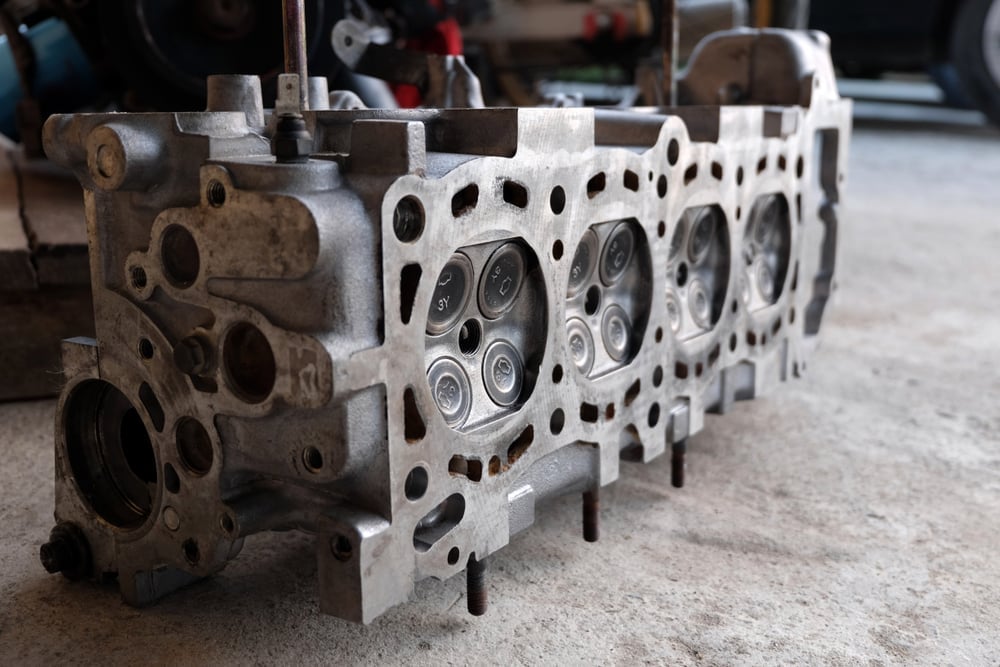
Another not-so-funny thing that can cause white smoke from your exhaust pipe is a cracked cylinder head or engine block. The engine block and the cylinder head are full of channels where the coolant flows to cool the engine down.
If you are very unlucky, the engine block or cylinder head may have cracked, and this can cause coolant to flow into the combustion chamber or out through the exhaust.
This is very rare, though, and usually only happens after an overheating engine or something similar. It can happen, though, and it occurs more on some engine models than others.
To fix these problems, you often have to replace the whole head or block, which results in a complete disassembly of the engine.
6. Too Rich Fuel Mixture
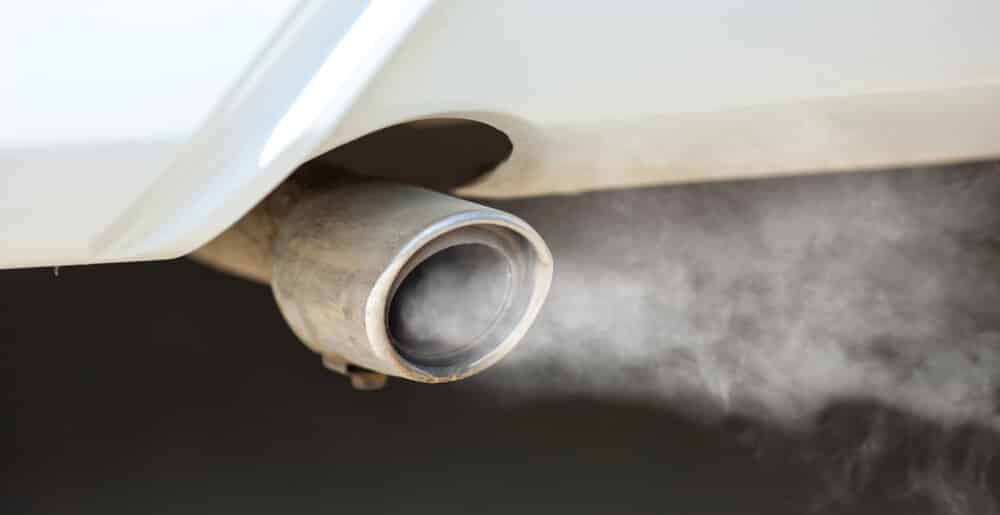
One thing that does not directly cause white smoke from the exhaust, but can be mistaken for it, is a too rich fuel mixture. This is not directly causing white smoke, but it is causing gray smoke, which can easily be mistaken for white smoke.
A rich mixture causes gray smoke, and a rich mixture is most often caused by faulty fuel injectors, a faulty MAF sensor, or faulty O2 sensors.
You can learn more about the different causes of a rich air-fuel mixture here: Engine Running Rich Causes & Symptoms
RELATED: Blue Smoke From The Exhaust (Causes & How to Fix it)
How to Diagnose a Car With White Smoke from the Exhaust

There are several ways to diagnose a car with white smoke. However, some methods are easier and faster than others.
Smell the Smoke
The first thing you should do is taste or smell the smoke coming from the exhaust pipe. If it has a sweet smell, it’s coolant.
If the smoke doesn’t smell or taste like anything more than water, it’s most likely condensation, and the smoke will go away after the car is heated up.
Use a Pressure Tester
The best – and, in my opinion, only – way to find internal coolant leaks is with a coolant pressure tester. You fit it on your radiator cap, put pressure inside the coolant system, and let it stand for an hour.
Remove the spark plugs or glow plugs and check for any signs of coolant leaks entering the combustion chamber. If you notice coolant, you might have a problem with your head gasket or a cracked cylinder head.
If you can’t find any coolant there, remove the pipes to the EGR pipes and check for any coolant signs inside of them. If you notice coolant, there is most likely a crack in the EGR cooler, and you have to replace it.
Can you drive a car with white smoke from the exhaust?
Whether you can drive your car with white smoke from the exhaust or not depends on how much smoke is coming from the exhaust. If you only notice white smoke when the engine is cold during start-up, it is most likely just caused by condensation. If there is always thick white smoke pouring out of the exhaust, it may be due to a bad head gasket, and you should not continue to drive the car.
What does white smoke from the tailpipe usually indicate?
White smoke from the exhaust pipe usually indicates either that the car is cold and condensation is evaporating in the exhaust pipe, or that there is a problem with water or coolant being combusted in the cylinders.
Why is white smoke coming out of my exhaust but not overheating?
If your car has white smoke coming from the exhaust pipe, but is not overheating, it could either be because there is nothing wrong with your car and it is just condensation coming from the pipe. It can also be caused if your EGR valve is leaking coolant into the exhaust pipe.
What color should exhaust smoke be?
Exhaust smoke should be slightly grey. If the exhaust smoke is white, it may mean that water or coolant is being combusted. If it is blue, it may mean that oil is burnt in the cylinders. If it’s black, it could mean your engine is running rich.
Categories: Engine, Exhaust, Troubleshooting
